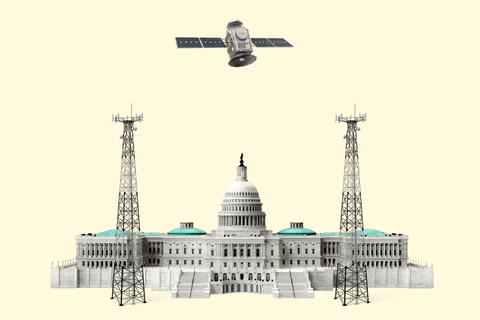A gap narrows, a problem remains |

Francis Scialabba
As the US’s digital divide shrinks, the issue grows more complex. As of 2021, 77% of Americans have access to broadband internet, per a Pew Research report released in early June. That’s up from 73% in 2019, but still leaves almost a quarter of the population without any home internet. But in the Covid-19 era, home broadband access isn't a binary yes/no. Nowadays, people need high-quality internet capable of supporting things like video calls for work, school, or telehealth appointments. “It’s been manageable [until now] because [people] had some kind of connectivity. They had DSL, they still used phone lines, they had low connectivity. But those speeds cannot deliver the services that are needed today. The problems we had before with the internet when it wasn't an essential service are different from the problems we have today,” Anthony Goonetilleke, group president of media, network & technology at Amdocs, told Emerging Tech Brew. Go away, gapThere are potentially both public and private solutions to close the digital divide, but plenty of uncertainty surrounds both. A quick survey... White House: President Biden’s American Jobs Plan aims to build high-speed broadband infrastructure, promote competition among providers, reduce the cost of internet connection, and ultimately achieve 100% broadband coverage for the entire country. Biden initially pledged $100 billion for the issue, but has lowered it to $65 billion after negotiations with Republicans. Congress: Lawmakers are considering two proposals to narrow the divide.
The stars: Space satellites in low-earth orbit (LEO) operate without the ground-based infrastructure required by telcos and governments. As long as customers have clear sightlines to space and a satellite dish, they will be able to access high speed internet.
“They [LEOs] are expected to pump a lot of satellite broadband capacity into a market that has been historically limited in terms of the throughput and much more expensive in terms of the pricing,” John Garrity, an international connectivity consultant, told us. Bottom line: The rapid, immediate transition to a digital workplace and school environment has left behind many who don’t have access to the internet. “So much of the pandemic response has depended on digital technology and connectivity,” Ardnt Husar, senior public management specialist at the Asian Development Bank told us. “And so much of the post pandemic recovery phase will depend on who has good coverage and who has the right context of affordability levels of digital connectivity.” Click here to read the full piece.—JM |
No comments:
Post a Comment